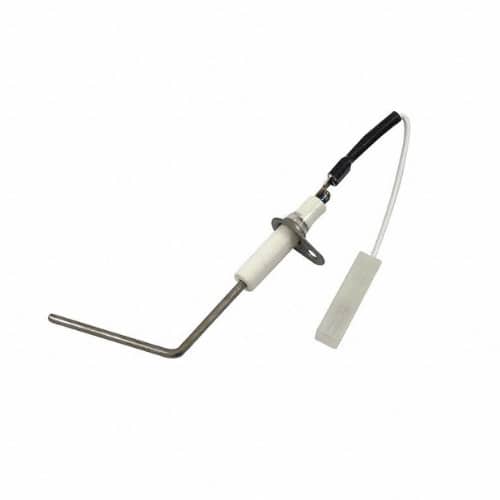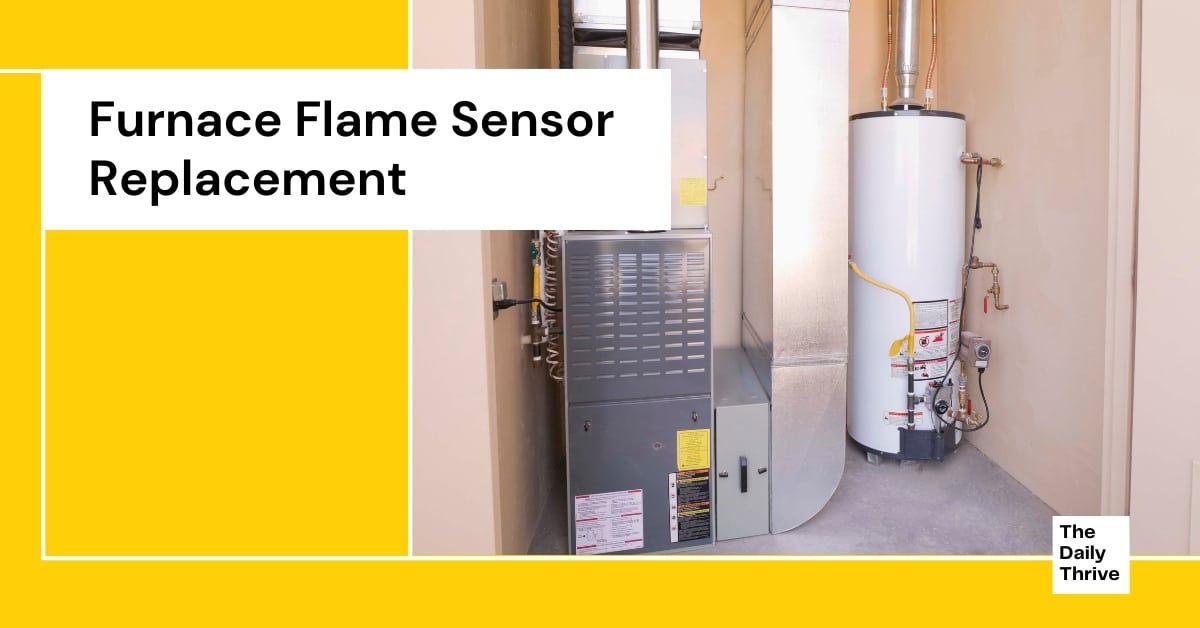A furnace flame sensor does what it says literally; to sense the flame. The flame sensor is a safety mechanism that your furnace uses to detect if there’s a flame or not. Understanding how to troubleshoot the furnace flame sensor problems can help keep your unit working for you while avoiding costly repairs.
Regular gas furnace maintenance is important to keep it running reliably and safely for years to come. Most homeowners recognize the importance of changing air filters, for example, but may not be aware that another regular maintenance task should be performed. The flame sensor on your gas furnace is critical to its proper and safe operation.
What is a Furnace Flame Sensor, Anyway?
The flame sensor on your furnace detects the presence of a flame through the process of flame rectification. When it senses a flame, it signals the control board that it’s okay to leave the flame on. When it does not sense a flame, it sends a message to shut everything down.
Over time, your furnace flame sensor can go defective and damaged. The flame sensor can build up a coating of dust and dirt. That build-up insulates the flame rod, which dulls its ability to sense the flame. So it will always say there’s no flame, even if there is one.
If you’re in doubt if it is your flame sensor that is acting up and causes troubles to your unit, check out these common signs of a faulty flame sensor:
- Furnace turns on then off after a few seconds
- Flame Sensor appears to be corroded or dirty
- The porcelain on the sensor is cracked
Either of the three signs will cause your furnace to operate in short cycles- meaning, it will turn on then off in a few seconds. This happens because a dirty or damaged flame sensor won’t be able to sense the presence of heat and will command the furnace to shut down.
When the flame sensor isn’t sensing flames, it will send the signal to the control board, and the control board will warn you there’s a problem. Usually, the warning comes in an Electronic Pilot Relight Warning or EPRL alarm. That alarm typically takes the form of a steady or blinking LED on the control board.
Before going through the basic troubleshooting steps, let’s first locate the flame sensor inside your furnace.
Furnace Flame Sensor Location

Flame sensor on a furnace is located on the burner assembly. It’s a thin metal rod, usually bent, and it sits just in front of the pilot flame inside the furnace.
- Remove the furnace cover. Remove the screws or knobs that hold the furnace cover in place.
- Look outside the burner assembly. The flame sensor is mounted just outside the burner assembly with wire/s attachment. The sensor sticks up through the housing and into the area where the flame is burning.
- Look for the flame sensor. It is a thin metal rod that may be straight or bent around the tip, depending on the sensor type or brand. It is mounted with porcelain insulation on the other end.
Furnace Flame Sensor Troubleshooting
The flame sensor can only have one of two problems. Either it’s broken, or it’s dirty. The odds of it being broken are very slim, but it does happen. You can tell if it’s broken if the ceramic insulator at the end of the flame rod has a crack.
Here is the step-by-step guide on troubleshooting the furnace flame sensor:
1# Shut off electrical power to your furnace.
You can switch it off through the toggle switch on/near your furnace or through its dedicated circuit breaker box in the absence of a switch.
Note: Make sure to shut off the main electric power and not the thermostat alone.
2# Close the gas valve.
If your gas valve is not electrically controlled, shut off the gas unit as well.
3# Locate the flame sensor.
Locate the flame sensor at the back of the furnace and in the path of the burner.
4# Remove the hex screws.
The flame sensors are typically kept in place by one or two ¼” hex head screws.
5# Slide the flame sensor out.
Gently pull the sensors out from the burner bracket or assembly.
6# Detach the connected wires.
You may have to detach the wires connecting to the sensor for some units to clean it well. This is unnecessary, but detaching the wires will give you ample space and flexibility to clean the sensor later.
7# Visually check through the flame sensor.
If soot, corrosion and carbon build-up is visible, your furnace flame sensor just needs cleaning. This happens very commonly. The good news is, cleaning a furnace flame sensor is very easy, and it can be done anytime with tools that are easily available at your home.
We have a complete guide on How To Clean A Furnace Flame Sensor on a separate post to help you out with your dirty flame sensor problem.
If there is/are visible crack/s on the porcelain insulation or obvious damage, the sensor must be replaced.
Replacing flame sensor on a furnace is not a difficult task; simply redo the above steps– shut the furnace and gas valve off, remove the flame sensor from the assembly and detach the wires. Skipping the cleaning part, proceed by mounting the new furnace flame sensor by doing the above steps now in reverse.
8# Check if the problem persists.
Once a clean or new furnace flame sensor is remounted, check if the furnace now works properly. Turn the power and the gas valve on and see if the furnace stays on for at least one power cycle.
Furnace Flame Sensor Replacement
In replacing the furnace flame sensor, you must purchase the correct part. There are universal flame sensors, but these typically aren’t reliable for every furnace. The part number should be on the flame sensor, but if it isn’t, you should be able to look at the part number in your owner’s manual.
You have to make sure to purchase the correct part for furnace replacement. If you're not sure which part to get, check your unit's information inside the access panel, and contact us with your brand, model, and serial number to suggest the best match for your system.
Where To Buy Furnace Flame Sensors
Local HVAC Shops.
Various local HVAC providers mostly have flame sensors available. In Canada and North America, they offer a broad list of furnace replacement flame sensors that you can choose from.
Online Store.
Should you choose to use a universal flame sensor as a replacement, they are widely available online at Amazon, Home Depot, Lowes or other building supply stores near your area.
How Much Does It Cost To Replace A Furnace Flame Sensor?
If a dirty flame sensor is the only issue, all you need is light grit sandpaper, steel wool, or emery cloth which will cost you less than $5.
For replacement, buying a new flame sensor will cost you less than $10 to $100 depending on your unit model and if you’ll get an OEM or a universal part. However, most flame sensors cost $30 – $50 in the market.
A professional furnace flame sensor repair and replacement.
If this is the case, you have to pay the minimum service fees of the furnace repair company that goes around $75 – $150, plus the cost of your new flame sensor if its needs replacement which is less than $10 to $100.
Thus, it is very economical to repair your furnace flame sensor and replace yourself. Besides, we have already walked you through the steps, and it is not a difficult job at all.
If you do not feel comfortable with the furnace troubleshooting and replacement process or your furnace still doesn’t work after you clean and/or replace the flame sensor, look for furnace repair in your area for help.






